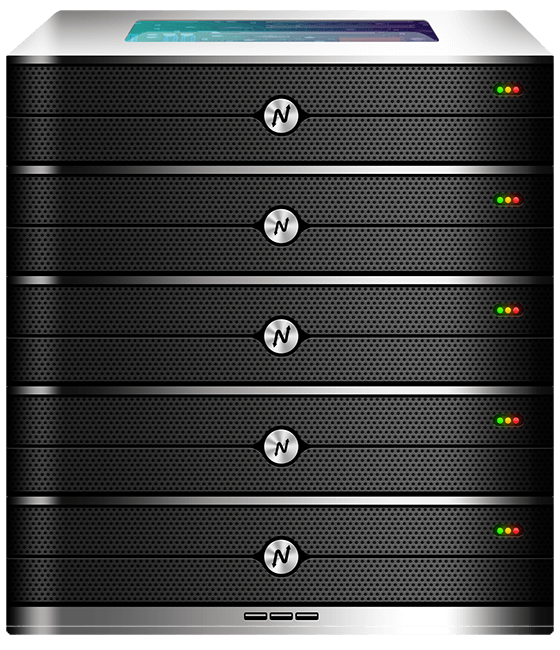If you have ever asked what is .org, you are not alone. The .org domain is one of the internet’s original top-level domains and it is commonly associated with nonprofits, open projects, and community initiatives. Understanding what is .org matters globally because choosing the right domain influences credibility, trust, and discoverability for organizations that serve people rather than sell products.
India’s hosting infrastructure and global connectivity make registering and hosting a .org domain from an Indian provider a sensible choice for many international organizations. Indian data centers combine cost-effectiveness, low latency across Asia, strong security practices, and scalable resources, so your .org presence can be both affordable and robust. This guide explains what is .org, who should use it, practical registration tips, hosting and DNS considerations, and why XenaxCloud’s domain & hosting options are a good fit for organizations that want professional presence and global reach.

What is .org — origin, purpose and who should use it
When people ask what is .org, they typically want to know why it exists and whether it suits their project. .org was created in 1985 as a generic top-level domain intended for organizations that did not fit into other categories. Over the years, the community around .org established it as the home for charities, NGOs, open-source projects, community groups, and professional associations.
The advantage of using a .org is perception. Many users instinctively trust .org sites for mission-driven content, documentation, and community resources. That trust matters when you solicit donations, publish policy papers, or host community forums. However, .org is not restricted: any individual or organization can register a .org domain, so the domain itself is a signaling choice rather than a technical restriction.
If your organization focuses on public benefit, education, culture, or collaborative projects, a .org domain aligns your brand with that mission. For teams aiming at international audiences, pairing a .org with reliable hosting and DNS from a provider like XenaxCloud simplifies management while preserving credibility.
How .org registration works and practical registration tips
A common follow-up to “what is .org” is a practical question: how do I register and manage a .org domain? The process is straightforward but benefits from best practices.
First, check the domain’s availability at a trusted registrar. If your desired name is taken, consider short variants or country-specific subdomains. When you register, confirm WHOIS contact details are accurate and set up domain privacy if you prefer to hide personal information.
Second, set sensible DNS and TTL values. For public-facing sites, a TTL of 300–3600 seconds is common, but lower TTLs before major changes can help reduce propagation windows. If you are moving hosting or migrating services, lower the TTL 48–72 hours ahead of the change.
Third, tie your domain to secure hosting and email. Use DNSSEC where possible, enforce HTTPS via valid TLS certificates, and configure SPF, DKIM, and DMARC for email authentication to preserve deliverability and domain reputation.
For domain management and hosting in one place, XenaxCloud’s domain console is convenient and integrates with hosting plans, making it easy to manage DNS, SSL, and renewal settings from a single dashboard. Visit the Domains section to see available options and streamline setup. (Internal link: https://xenaxcloud.com/domain/)
Why choose a .org for credibility and SEO (and what it does not guarantee)
Understanding what is .org also means understanding what it will and will not do for you. A .org domain helps with perceived credibility but does not automatically improve search rankings. Google’s algorithms do not favor .org over other TLDs strictly based on extension, but users are more likely to click and trust recognized organizational domains.
That said, .org sites that follow content best practices, authoritative citations, and strong technical SEO typically perform well. Use clear structured data, robust content that demonstrates expertise, and reliable hosting to support speed and uptime. Combining a .org with a fast NVMe-backed server and proper caching increases user satisfaction and reduces bounce rates, which in turn supports SEO.
How to choose hosting and the right plan for a .org site
Choosing hosting for a .org site requires balancing traffic expectations, security, and budget. If you are launching a simple informational site, a Shared Hosting Silver plan is often enough. It provides a low-cost starting point while keeping site management simple.
For community platforms, donor portals, or sites with moderate traffic, a VPS is a better option. The Speed KVM VPS 1 — 2 Vcore CPU, 4GB RAM, 40GB Storage, 2TB Bandwidth — offers predictable performance for web applications and smaller databases. For growing organizations or multi-tenant platforms, consider KVM VPS 3 or the Normal KVM VPS options which provide more CPU and RAM.
Examples:
- Small local NGO with static content: Shared Hosting Silver is cost-effective and easy to maintain.
- Regional nonprofit with event registrations: Speed KVM VPS 2 or KVM VPS 2 gives better concurrency and database performance.
- Open-source platform or community portal: KVM VPS 3 or KVM VPS 4 offers headroom for spikes.
When selecting, prioritize NVMe storage for faster I/O, automated backups, and SSL automation to keep the site secure and resilient. Many organizations find value in centralizing domain, DNS, and hosting under the same provider to reduce configuration complexity. Consider XenaxCloud’s combined options for a seamless setup and remember to check the latest offers on the XenaxCloud Offers Page.
- 1 Website Host
- 15GB SSD Storage
- 100GB Bandwidth
Speed, uptime and security: technical foundations for a .org site
A core part of answering what is .org in practical terms is ensuring the site behind the domain is fast and available. Uptime and performance matter more for mission-driven sites than many realize; downtime during a campaign or fundraiser can directly affect revenue and reputation.
Speed: Use NVMe storage, server-side caching, and CDN edge caching for global reach. If your audience spans Asia-Pacific and beyond, choose data centers with strong peering and low latency to those regions.
Uptime: Aim for at least 99.9% uptime. Redundant networking and monitoring reduce the chance of visible outages. Apply routine health checks and alerts to detect issues early.
Security: Implement HTTPS, keep software patched, use web application firewalls where needed, and limit admin access. Also enable two-factor authentication for control panels and registrar accounts. For donation or payment pages, ensure PCI compliance if you handle card data; otherwise use third-party processors and secure redirects.
These technical steps ensure that your .org domain delivers the trust implied by the extension.
Comparison: Indian servers vs US, Canada, Germany, UAE
Below is an operational comparison focused on hosting and delivery considerations that matter when you launch or maintain a .org site. This table intentionally avoids pricing and focuses on support, provisioning, uptime and reach.
| Metric | India | US/Canada | Germany | UAE |
|---|---|---|---|---|
| Latency to APAC | Low — strong peering to Asia-Pacific | Higher to APAC, lower to Americas | Moderate — ideal for Europe | Good regional connectivity |
| Provisioning & Support | Fast provisioning, 24/7 regional support | Fast, broad global support | Enterprise SLAs, business-hours focus | 24/7 support with regional expertise |
| Reliability | High — redundant backbone and local peers | Very high — global network footprint | High — enterprise-grade infrastructure | High — regional resilience |
| Best for | APAC-focused audiences and cost efficiency | Americas-centric audiences and global reach | Europe and GDPR-focused projects | Middle East and APAC hybrid strategies |
For many .org owners serving regional communities in Asia-Pacific, Indian servers offer a sweet spot between performance, cost, and operational support.
Real-world use cases: who benefits most from a .org domain
Understanding what is .org is best illustrated through examples:
Nonprofit charities: Use .org to host mission pages, donation forms, annual reports, and volunteer signups. The extension signals trust, which can increase conversion for donations.
Open-source projects: .org is a natural home for documentation, issue trackers, and community forums that welcome contributors.
Professional associations: Use .org for member directories, certification resources, and event registrations.
Educational initiatives: Research groups, community education programs, and public information campaigns benefit from the credibility a .org provides.
Each use case benefits from secure hosting, fast page loads, and reliable email delivery. Consider pairing your .org with a plan like Speed KVM VPS 2 for dynamic sites or Shared Hosting Silver for brochure sites.
Scalability options for growing .org projects
As your .org site gains traffic, plan for scaling. There are two primary approaches:
Vertical scaling: Increase CPU, RAM, or disk on your existing VPS. This is quick and ideal for single-instance applications.
Horizontal scaling: Add additional instances behind a load balancer and distribute traffic, which is preferable for high-availability architectures and community platforms.
Cache static assets at the edge using a CDN, and offload media to object storage. For database-heavy workloads, use read replicas or managed database solutions where possible. Use observability tools to track performance metrics and set thresholds for scaling action.
XenaxCloud’s VPS lines provide clear upgrade paths from Speed KVM VPS 1 to higher-tier KVM VPS plans when you need additional resources.
Frequently Asked Questions (FAQ)
What is the difference between Indian VPS and foreign VPS?
The primary difference lies in latency for the target audience: Indian VPS offers drastically reduced latency for users in the Asia-Pacific region, while foreign VPS may be marginally faster for users very close to that specific region (e.g., US VPS for North American users). Both offer dedicated resources and control, but Indian VPS offers superior cost-effectiveness and in-time-zone support.
Can Indian servers handle global website traffic?
Yes, absolutely. Modern Indian data centers like those used by XenaxCloud utilize premium, multi-homed network routing and are designed to integrate seamlessly with global Content Delivery Networks (CDNs), ensuring efficient and fast delivery of content to users worldwide.
Is Indian hosting cost-effective for international users?
It is highly cost-effective. Indian hosting providers often offer premium features and resources at a lower operational cost than Western counterparts, providing significant budget savings for international non-profits and businesses without compromising performance or reliability.
How to choose the right server for my business?
To choose the right server, you should first assess your current website traffic, resource usage, and expected growth; new, low-traffic sites should start with Shared Hosting, while high-traffic or resource-intensive applications should opt for the dedicated power and isolation of a KVM VPS plan.
How reliable is XenaxCloud hosting?
XenaxCloud maintains high industry-standard uptime guarantees and uses state-of-the-art data center technology, redundant power, and advanced security measures, making it a highly reliable and trustworthy platform for mission-critical .org websites.
Conclusion —
So, what is .org? It is a trusted domain extension with deep roots in the nonprofit and open community world. It signals purpose and credibility, but to realize those benefits you must pair the domain with fast, secure hosting, proper DNS and email setup, and clear content that demonstrates expertise and trust.
Choosing Indian hosting with a provider like XenaxCloud delivers cost-effective infrastructure, low latency across Asia-Pacific, reliable security and compliance options, and scalability for growing international projects. Start small with plans like Shared Hosting Silver for brochure sites or Speed KVM VPS 1 and scale to KVM VPS 3 or higher as your traffic and needs grow. XenaxCloud offers integrated domain and hosting management, a 15-day money-back guarantee, and current promotions on the XenaxCloud Offers Page to help you test risk-free.
Ready to register your .org and launch a credible, fast, and secure web presence? Visit XenaxCloud’s Domains page to get started and pair your new .org with the right hosting plan for your goals. (Internal link: https://xenaxcloud.com/domain/)
Recommended plans: Shared Hosting Silver — 1 Website, 15GB Storage, 100GB Bandwidth, $1.79 for simple sites; Speed KVM VPS 1 — 2 Vcore CPU, 4GB RAM, 40GB Storage, 2TB Bandwidth, $4.79 for dynamic apps; KVM VPS 3 — 8 Vcore CPU, 16GB RAM, 70GB Storage, 4TB Bandwidth, $14.39 for mid-size platforms.





